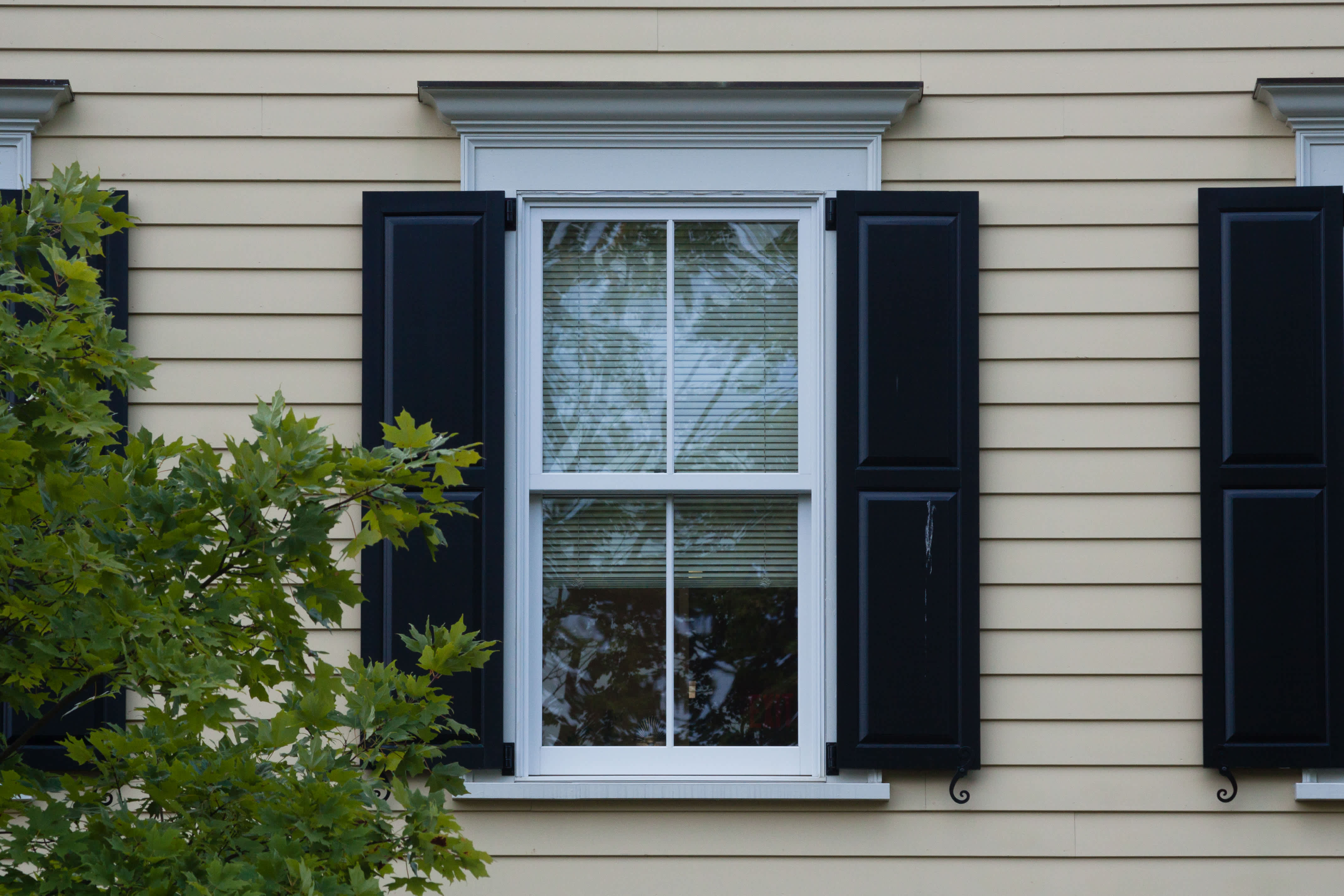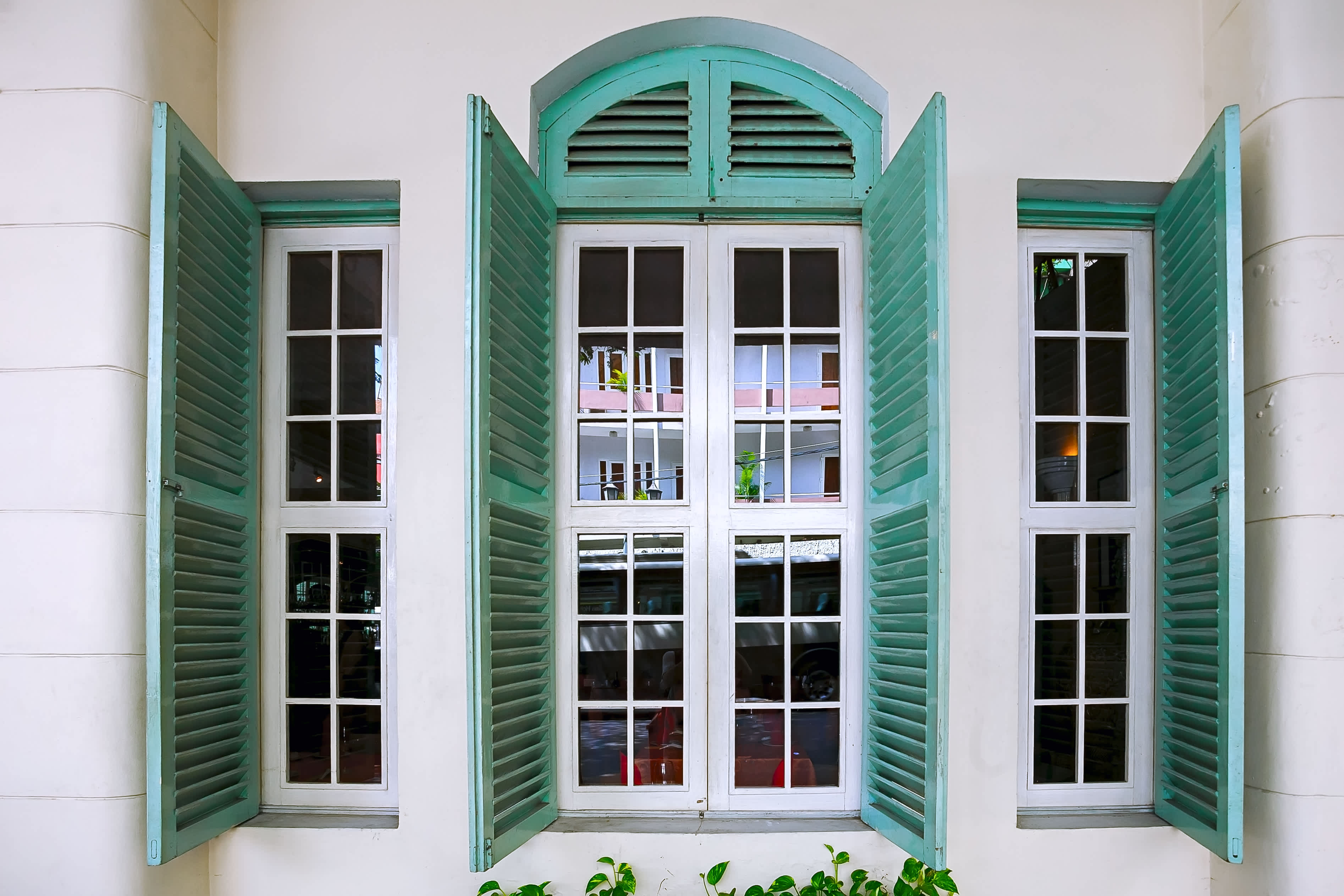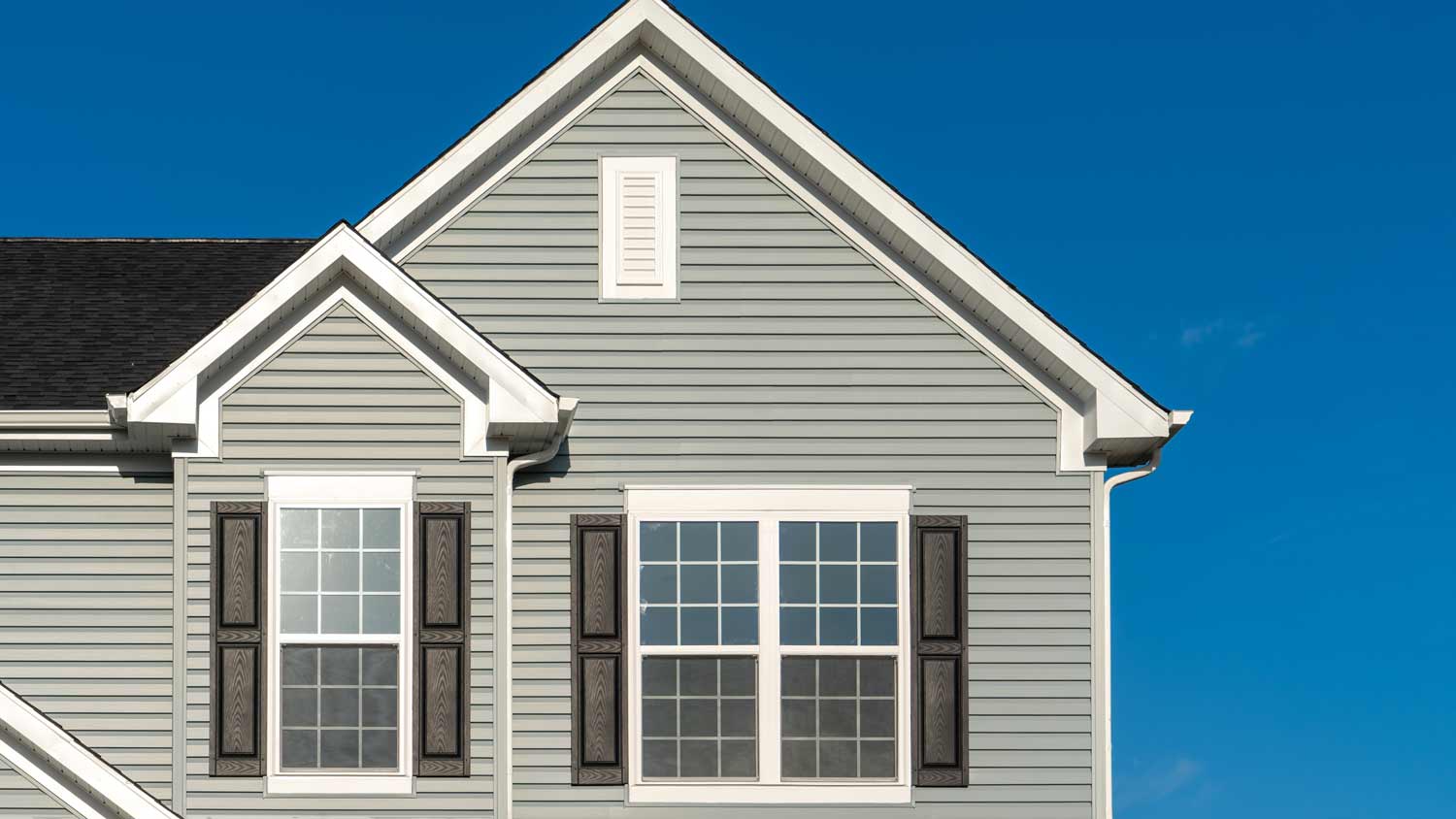
Window replacement enhances your home's appearance and helps to maintain a consistent indoor temperature. Discover the cost of window replacement in Columbus.
Don’t shutter in fear, your shutter sizing guide is here


Decorative shutters should be between 25% and 33% of your window’s width for the best aesthetic.
Operational shutters need to cover half of your window so that they can meet in the middle to provide adequate protection.
The height of your shutters should always match the height of your window.
The type of window you have and the dimensions of the window are the two factors that matter most when sizing your shutters.
The right size shutters can maximize curb appeal and provide adequate protection for your windows in the case of severe weather. When it comes to sizing them, though, there are many things to think about, from the dimensions of your window and your overall home size to the proximity to other windows and how you want to use your shutters. Understanding standard shutter sizes is a good place to start if you’re thinking about installing shutters on your home.
There’s no standard shutter size, because shutters will always scale with the size of the window. But there are a few rules of thumb you can use to get a good estimate.
For all shutters, match the height to the height of your window. For decorative shutters, aim for a shutter width that’s 25% to 33% of the window’s width, and for operational shutters, you’ll want the shutter to be 50% of the window’s width, plus an inch or two extra to allow for space to mount the hinges.

Given that there are standard window sizes that vary based on the type of window, you can start getting an idea of what size shutters you need by looking at the window you’re treating. The sizes vary widely even within a particular window style, but you can use the following table as a baseline to get a rough estimate. Just be sure that you or your window shutter pro measures your specific window before purchasing shutters.
| Type of Window | Typical Shutter Width (in.) | Typical Shutter Height (in.) |
|---|---|---|
| Awning | 6–30 | 8–92 |
| Casement | 5–20 | 16–72 |
| Double-hung | 6–24 | 36–72 |
| Picture | 9–48 | 24–96 |
| Single-hung | 6–24 | 36–72 |
| Sliding | 9–42 | 24–60 |
Awning windows span from 24 inches to 60 inches wide, in most cases, and from 8 inches to 92 inches tall. Aim for a minimum of 6 to 8 inches wide or 25% to 33% of your total window width for decorative shutters and between 12 inches and 30 inches wide for operable shutters. For height, just match your window height, which will usually be between 8 and 92 inches.
Decorative shutters for casement windows should be a minimum of 5 to 6 inches wide, and for operable shutters, you’ll want between 10 inches and 20 inches wide, depending on the width of your window. The height of your shutters should match your window’s height, which will be between 16 and 72 inches.
Double-hung and single-hung windows should get shutters that are a minimum of 6 to 8 inches wide. Wider windows may need shutters that are 24 inches wide if you want them to be able to close and protect your window. Shutters for these window styles will be between 36 and 72 inches tall and should match your window height.
Shutters for picture windows will need to be a minimum of 9 inches wide and 24 inches tall for the smallest common picture window size. For decorative shutters on large picture windows, you may need a width of up to 48 inches, in which case folding shutters would be necessary for a clean aesthetic. Matching the shutter height to your window height means aiming for between 24 and 96 inches.
Sliding windows tend to be wider than most other styles, so shutter widths of up to 42 inches are possible. At this width, you’ll need folding shutters if you want them to be operable. The main benefit of folding shutters is that you can maintain good proportions between your window and shutters while still getting the protection you want during inclement weather. For decorative shutters, they can be as slim as 9 inches. The height of the shutters for a sliding window will range from 24 to 60 inches for most windows.
For all shutters, you can get the height by measuring the height of your window. Shutters should extend from the top of the window to the bottom. You can oversize operable shutters by a half-inch on either side for better protection, but avoid going much bigger than that for the best appearance.
If you want to be able to use your shutters to protect your windows, you’ll need a shutter width that’s 50% of your window width, so measure your window from the outside edge of the exterior trim to the outside edge on the other side. You may need to add a half-inch or so to the width to leave room for the mounting hardware. Just make sure your shutters meet in the middle when closed.
For decorative shutters, it’s all about aesthetics, so aim for 25% to 33% of your window’s width by measuring your window width and then dividing by 3 or 4.

There are a few key factors that can guide you on how to size your shutters properly, and you should consider all of them when deciding on the right shutter size.
Your window shutters should always match the height of your window, and the shutter width should be a proportion of the window width. As such, your window size matters most. The window style also matters, although indirectly, as some window types tend to be larger than others.
If you’re on a tight budget, you can bring down the cost of your window treatments by going with slimmer shutters closer to 25% of your window width. This will bring down material costs only slightly in some cases, but for higher-end materials like real wood, it could lead to significant savings.
The height of your shutters should always match the height of your windows, but whether you want operable or purely decorative shutters affects the width. For operable shutters, you need them to be at least 50% of the window’s width so that they can meet in the middle for protection. For wider windows, you can get folding shutters so that they don’t extend so far out from your window’s edge to the point where they look oddly proportioned.
For decorative shutters, go for a width that’s between 25% and 33% of your window’s width.
For decorative shutters, a width of between 25% and 33% of your window width is ideal for good proportions, and within this range, it’s mostly up to personal preference. However, you may need to err on the slimmer side if you have nearby windows that would leave shutters too close to each other if you upsized them. No matter which way you go, keep things consistent across all of your windows.
Finally, think about your home size and how many windows you have. Larger homes with fewer windows can support wider shutters without looking strange, while smaller homes with many windows can look cluttered if you go with wider shutters.
If you have decorative shutters that you think are too big or too small, the only option is to replace them with the right size shutters. You can contact a window shutter company near you to help get the sizing right, as they’ll consider window size, home size, window density, neighborhood aesthetics, and more to help you maximize your home’s curb appeal.
Fixing operable shutters that are too big or too small is a bit more challenging because you’re limited in width based on your window size. If your shutters seem too small, you could opt to remove the shutters from that window altogether and consider a small storm window for protection instead. If the shutter seems too wide for the window or your house design, calling a pro to install folding shutters is your best bet to get the right look while maintaining that functionality.
From average costs to expert advice, get all the answers you need to get your job done.

Window replacement enhances your home's appearance and helps to maintain a consistent indoor temperature. Discover the cost of window replacement in Columbus.

Window repair costs in Columbus, Ohio, depend on several pricing factors, including the type and size of the repair it needs and the window itself.

Garden windows can be a great addition to your kitchen, adding light and a place to grow plants. Costs depend on material, size, and customization—learn how much you can expect to pay.

This guide explains when money-saving handyman window repairs are appropriate and when it’s best to leave the job to a window specialist.

Vinyl windows are popular, but are they perfect? Learn about vinyl windows pros and cons to make the best decision for your home improvement project.

Window track repairs include replacing the wheel, cleaning the track, and lubricating the track. Read this how-to to learn how to fix your window track.